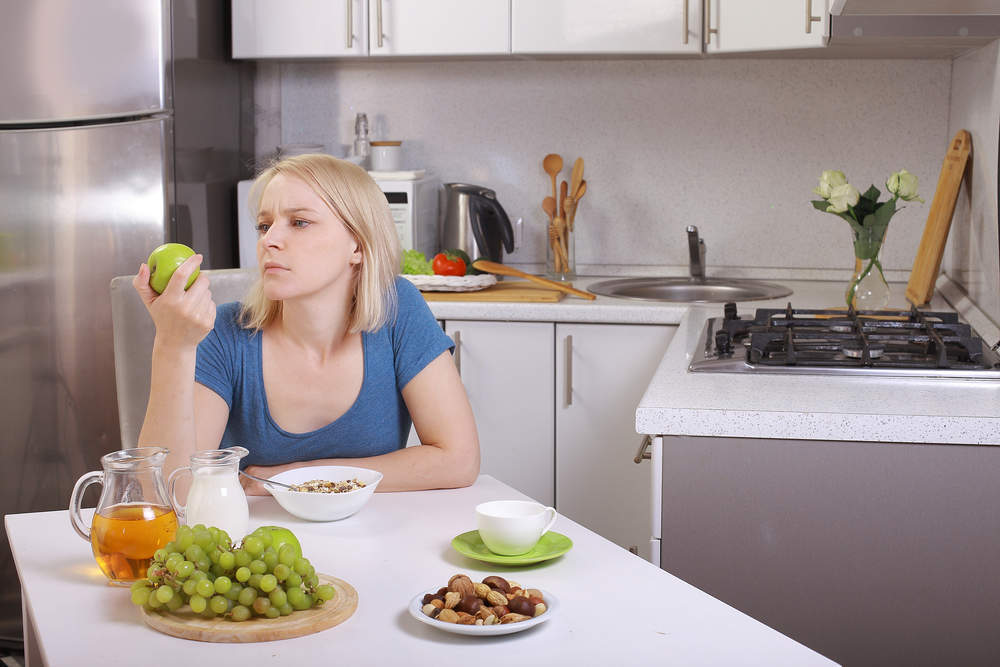
In an age when we’re thinking more carefully than ever about what we put in our mouths, myths about food and drinks are ever more prevalent.
Trends like detoxing, clean eating, and other diet fads have compounded the degree to which we hear these myths. Sometimes they’re genuine misunderstandings, and sometimes they’re used as a kind of propaganda to extol the benefits of certain dietary trends.
Either way, myths about food and drink are pervasive. Here are a few of the most common ones based on brands and individual food and drinks enjoyed across the world.
Dolmio has literally no connection to Italy
Despite being represented by a rabble of stereotypically Italian puppets, the Dolmio brand actually has zero connection to Italy. The pasta sauce is bottled in Scotland in the United Kingdom.
Japanese gin is not always distilled in Japan
While researching for an article on genuine Japanese spirits, Verdict stumbled across the Cambridge Distillery. As one might expect, the Cambridge Distillery is located in Cambridge, UK. However, one of the distillery’s gins is called Japanese Gin. And while this particular gin (which is actually very tasty) has many Japanese ingredients, it is not made in Japan.
Cadbury’s Dairy Milk do not contain a glass and a half of milk
Despite it being part of the Dairy Milk logo, it is actually almost impossible to find a dairy milk that contains a glass and a half of milk. The glasses depicted in the logo are clearly Highball glasses. This a specific kind of glass which is defined as being made of glass and holding 240-350ml.
How well do you really know your competitors?
Access the most comprehensive Company Profiles on the market, powered by GlobalData. Save hours of research. Gain competitive edge.

Thank you!
Your download email will arrive shortly
Not ready to buy yet? Download a free sample
We are confident about the unique quality of our Company Profiles. However, we want you to make the most beneficial decision for your business, so we offer a free sample that you can download by submitting the below form
By GlobalDataThe average volume of a glass and a half would therefore be 442.5ml of milk. However, Dairy Milk only contains the equivalent of 426ml of fresh liquid milk in every 227g of milk chocolate. But here’s the kicker, the biggest standard size of Dairy Milk (discounting those massive souvenir sizes you can get in duty free) is 200ml. Therefore you’d have to eat a whole one of those and a bit of another to get your glass and a half.
The standard size Dairy Milk is a paltry 45g and therefore contains the equivalent of 84ml of milk. That wouldn’t fill up even half of the smallest Highball glass out there.

Carrots do not help you see in the dark
Probably the most famous of all ridiculous food myths. This was, of course, a World War II ad campaign designed to befuddle German spies. The British Royal Air Force became adept at shooting down German bomber planes, even when they were flying across the English channel at night-time.
The Ministry of Information pumped out propaganda suggesting the reason Britons could do so was because they could see well in the dark. The reason for this incredible night-vision? A diet of carrots.
Of course, the real reason for Briton’s incredible ability to intercept German bombers was a state of the art radar. But the government didn’t want Hitler and his generals knowing that.
Since then, the myth has taken on a life of its own and the line about carrots helping you see in the dark is a frequently heard at dinners where small children are refusing to eat their vegetables.
So is it true? Well, it’s not totally baseless. VisionDirect explain that carrots contain vitamin A. The body can use this vitamin to protect the cornea in the eye. This can help ward off age-related macular degeneration and keep eyesight strong.
A vitamin A deficiency can lead to a condition called ‘night blindness’. Sufferers find it much more difficult than normal-sighted people to see it at night. Eating a diet rich in vitamin A could correct this, but only as far as repairing the damage. Eating a tonne of carrots would improve your vision if you already had a terrible and specific vision.

Drinking gin and tonic will not make you immune to malaria
With the incredible popularity of gin at the moment, we’re starting to hear that old adage that drinking a few G&Ts makes a person resistant to malaria.
And, like with the myth about carrots helping people see in the dark, this is based on a kernel of truth. Gin and tonic was first invented by British colonists in tropical countries. The taste of gin was used to mask the bitter taste of quinine which was consumed in carbonated water. This carbonated water became known as ‘tonic’, and gin and tonic was born.
Unfortunately, times have changed since those days and so has tonic water.
According to the World Health Organisation, to treat malaria adults need 500-1,000mg of quinine every eight hours, for 3 to 10 days. That’s 1.5-3.0g of quinine per day.
Today, the US Food And Drug administration limits the quinine content in tonic water to 83 mg per litre. A single unit of gin 30ml and a standard gin and tonic has a ratio of 1:3 gin to tonic. Therefore, a standard gin and tonic will have 90ml of gin which would contain, at maximum 7.47mg of quinine.
Therefore, a person would have to drink around 200 gin and tonics to get the minimum required amount of quinine to treat and resist malaria.
Spicy foods/vitamin C/other things help you ward off a cold
The reason there’s no cure for the common cold is because there is no one single cause of the common cold.
The American Centers For Disease Control and Prevention note that over 200 viruses are implicated in causing colds. Even if a cure was found for one of these viruses, there’d still be another 199 or so to deal with.
It stands to reason that there cannot possibly be one single treatment effective for dealing with all these viral strains.
And while the idea that drinking orange juice and eating curries to ward off a cold is pervasive there is simply no evidence that either actually works. The best way to avoid a cold is frequent hand-washing, avoiding infected people, and plenty of fresh air.
Digesting celery doesn’t burn more calories than eating it takes in
To be fair, you have to feel sorry for dieters purveying this myth. They’re probably so maddeningly peckish they’ll believe anything.
Sadly though, this celery nonsense simply isn’t true. Due to the amount of undigestable cellulose in celery, the amount of energy a human can get out of a medium-sized stalk is about six calories. Admittedly that isn’t a lot (you’d have to eat 14,166 sticks of celery to equal one packet of Quavers) but even so.
A person only burns around half a calorie digesting it. In fact, studies show that if you’re eating a high-fibre diet, you’d actually burn even less digesting celery. So forget this, it’s nonsense.
Drinking cranberry juice doesn’t help cure a UTI
While numerous studies have shown that cranberry juice does help prevent and cure urinary tract infections, a 2012 review of all those studies, and several larger ones found that there was no real evidence to support this theory.
The UK’s national health service website explains:
“From the evidence they conclude it is unlikely that cranberry in its juice form is going to be an acceptable and effective intervention. Even if its “anti-adhesion” qualities could be proven, they calculate that to maintain levels of the PACs thought necessary to prevent bacteria sticking to the bladder lining, people would have to drink 150ml of the juice twice a day for an indefinite length of time.”
Milk does not increase mucus production when you have a cold
This myth has been recorded in records dating back to the 12th Century in China. It is, of course, utter balderdash.
A study in Australia back in 1993 found that those who drank milk did notice an increase in mucus. However, the group who drank the placebo drink noted the same thing. The effect was also pronounced in those who already believed in the myth linking milk and mucus. Therefore this myth is likely to be at least partially psychosomatic.
However, there is an explanation as to why it might feel as though there’s more mucus in your mouth and throat after drinking milk. Milk is an emulsion (it is tiny molecules of fat suspended in water). After it is mixed with saliva in the mouth, droplets cluster together.
This process, which is known as flocculation could change a person’s mouthfeel. They might feel as though there’s more mucus in their mouth after drinking milk, even though there isn’t.

Milk also might not be good for making your bones grow strong
Research goes back and forth on this one, so whether its truly a myth or not is a big question at the moment.
Still, considering it is a line trotted out by vegans the world over, it bears investigating.
There’s no denying that milk contains calcium. There’s also no question that calcium is necessary for bone development and structural support. Calcium is also used by the body to help clot blood and send nerve impulses.
Normally, a person gets the daily necessary amount of calcium through their diet. However, if they don’t, evidence suggests that the body will pull calcium out of the bones to be used elsewhere in the body. This can lead to weaker bones. As a result, doctors often recommend drinking milk or eating yoghurt to keep the body’s calcium levels topped up.
However, the ‘acid-ash’ hypothesis calls this into question. Essentially, it suggests that digesting milk leads to a build-up of lactic acid in the body which makes a person’s urine acidic. To compensate, the body pulls alkaline materials, such as calcium, from the bones in order to balance this pH.
However, other studies have disputed these findings. Urine pH is not indicative of a body’s general pH, and actually other studies have found that people who consume a lot of dairy products have more alkaline urine.
There’s a whole host of people going back and forth on this one. Whichever side of the myth you believe, there’s a chance you could be wrong.
Going on a juice cleanse does not help you detox
Juice fasts and cleanses are generally known to be snake oil remedies, yet people still buy into them.
In general, juice cleanses tend to suggest that they will help clear out so-called toxins from the digestive tract. Even if these cleanse programmes made clear what they meant by ‘toxins’ (which they mostly do not) the whole concept is fundamentally flawed.
The body does produce toxins, harmful byproducts of natural processes. For example, urine contains ammonia which is extremely poisonous. Still, the body filters out ammonia with the kidneys and liver.
If toxins are building up in your body, as juice cleanses and detoxes claim, that would prove the liver and kidney are not working. This is known as organ failure and it is not something a juice cleanse could fix.
The other pervasive lie of juice cleanses is that flushes out the intestines. The image is like a car engine being cleaned. This is also nonsense. The human digestive system would not work at all if blockages and things sticky to the sides of the intestines were possible.

Chewing gum does not stay inside you for seven years if you swallow it
Speaking of digestion, let’s tackle this famous lie about chewing gum. Heard on just about every school playground in the world, there is no basis for it.
Chewing gum is made of a gum base, sweetener, flavouring, preservatives and softeners. All can be easily digested except the gum base. Traditionally this was made of tree sap, a cellulose-heavy plant cell which, like the aforementioned celery, the human digestive enzymes find difficult to break down.
However, now that chewing gum is produced at an industrial scale, tree sap is not an effective way to make the gum base. These days, it is usually a synthetic polymer. One such polymer is butyl rubber, the same stuff used to make inner tubes in car tires. So that’s fun. It’s also obviously not something the body can break down.
As a result, the gum base cannot be digested. But, just like with everything else the body can’t digest, it just gets flushed out through the digestive system.
The only time it’d hang around is if you swallowed so much of it that it all stuck together. This would cause a blockage in the digestive tract and you’d probably have constipation. This effect has only ever been recorded in small children who are spoiled with too much gum.
Fosters is Australian
Much is made of the fact that Foster’s ‘isn’t’ Australian, but let’s put this to bed once and for all. Foster’s is Australian.
Foster’s was first created in 1888 by a pair of Irish-American brothers, William and Ralph Foster. It went on sale to the public the following year. It continued to be made and sold in Australia until 2002. Eventually, the Australian branch of the company closed when it became clear that the UK (who had been brewing the lager under license since 1981) was a more profitable market.
Since then, much has been made of the Australian connection with numerous ad campaigns highlighting the Australianness of the product.
The UK version of Foster’s is, however, brewed by Heineken at the Royal Brewery in Manchester.
Still, that doesn’t make it any less Australian. Recipes don’t suddenly change nationality based on where they are currently being created. Britain’s favourite takeaway is Chinese but no one would argue that chow mein is a British dish.
So Fosters is Australian. Kind of.






